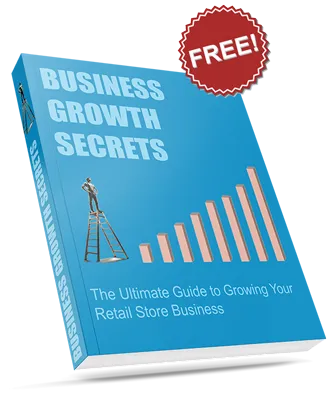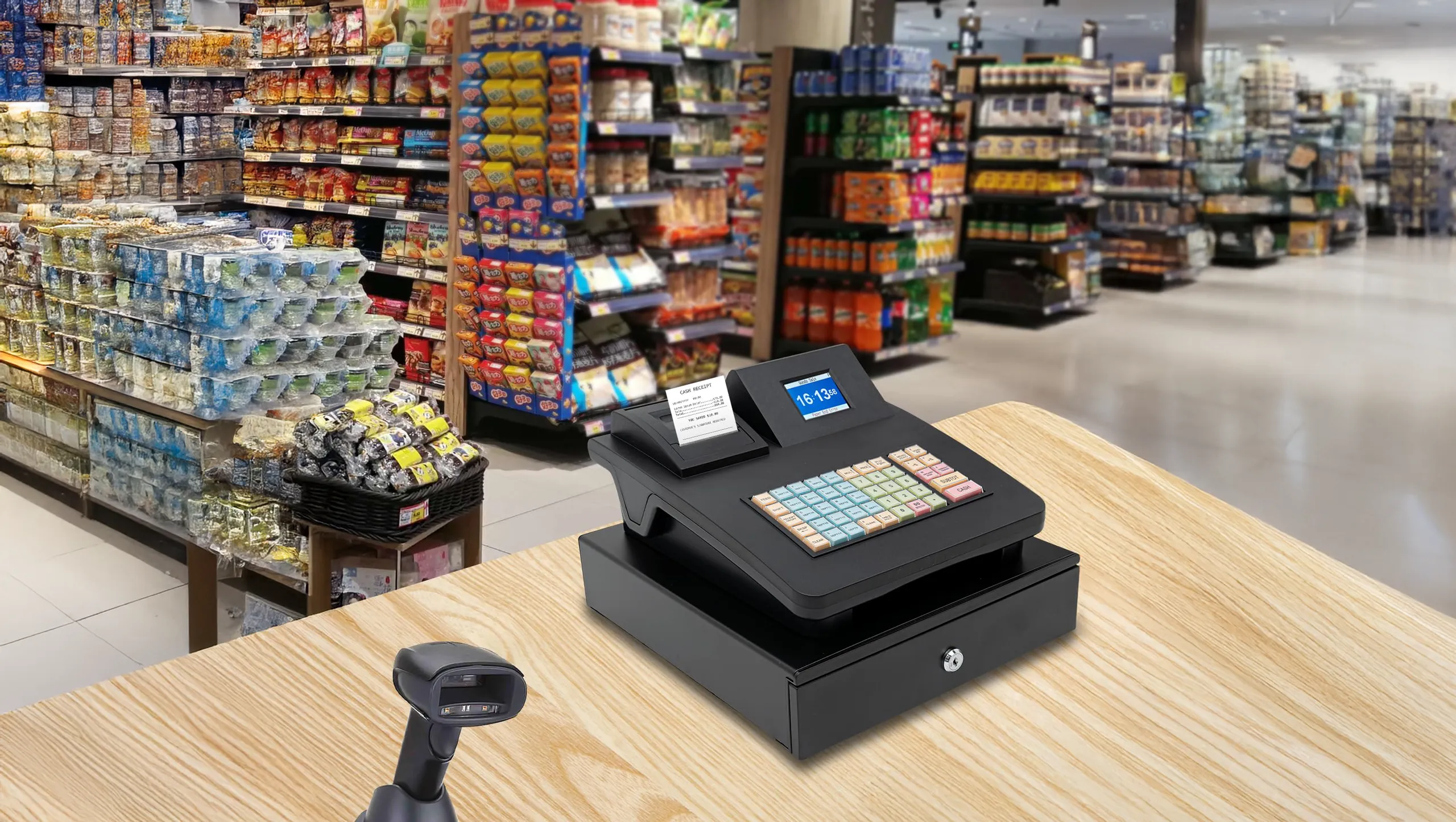Mastering Cash Flow Management For Brick-and-Mortar Retail Stores
Unlock Financial Stability
for Your Store
Discover essential strategies to manage your store’s cash flow effectively and ensure long-term profitability.
Proven Cash Flow Strategies for
Profitable Retail Operations
In the highly competitive world of brick-and-mortar retail, managing cash flow is not just an operational task—it’s a lifeline for long-term success. Cash flow management ensures that businesses can meet their immediate financial obligations, seize growth opportunities, and maintain profitability even in uncertain times. This article provides actionable strategies for retail store owners to manage cash flow effectively, maintain consistent revenue streams, and ensure profitability.
Why Cash Flow Management Matters
Cash flow is the movement of money in and out of a business. It’s not enough for a retail store to be profitable on paper—if the cash isn’t readily available to pay for inventory, utilities, rent, or employee wages, the business can face serious challenges. Effective cash flow management bridges the gap between expenses and income, enabling business owners to:
- Cover operational costs during slow sales periods.
- Build a financial cushion to handle unexpected disruptions.
- Invest in growth initiatives without compromising day-to-day operations.
Strategies to Maintain Sufficient Cash Flow
- Create a Cash Flow Forecast
Forecasting is a cornerstone of cash flow management. By analyzing past sales trends and accounting for seasonal fluctuations, store owners can anticipate cash flow gaps and plan accordingly. Tools like spreadsheets or cash flow management software can help project income and expenses over a specified period. - Negotiate with Suppliers
Building strong relationships with suppliers can lead to better payment terms. Negotiating extended payment periods or bulk discounts allows you to retain cash longer, easing the pressure on your budget. - Offer Incentives for Early Payments
Encourage customers to pay quickly by offering small discounts for early payment. This tactic works particularly well for businesses with B2B clients, ensuring faster cash inflows. - Manage Inventory Efficiently
Overstocking ties up valuable cash, while understocking can lead to missed sales. Implement inventory management systems to monitor stock levels and order just enough to meet demand without overcommitting resources. - Build a Cash Reserve
Set aside a portion of your earnings to create a financial buffer. A reserve equivalent to three months of operating expenses is ideal, offering a safety net during unexpected downturns or emergencies.
Revenue and Profitability: The Keys to Financial Health
Maintaining consistent revenue streams and generating profit are essential for a healthy cash flow. Here’s how retail stores can achieve both:
- Focus on Customer Retention
Acquiring new customers is more expensive than retaining existing ones. Implement loyalty programs that reward repeat customers with discounts, exclusive offers, or early access to new products. Happy, loyal customers not only bring consistent revenue but also become advocates for your business. - Diversify Your Revenue Streams
Expand your product or service offerings to cater to different customer needs. For instance, a clothing store could add tailoring services or offer a subscription box with curated outfits. - Optimize Pricing Strategies
Regularly review and adjust prices to reflect market trends and maintain profitability. Consider implementing dynamic pricing during high-demand periods or bundling products to encourage larger purchases. - Invest in Marketing
Marketing drives foot traffic and sales. Use cost-effective digital marketing strategies like email campaigns, social media ads, and search engine optimization (SEO) to attract more customers. Highlight promotions, new arrivals, and customer testimonials to build trust and interest. - Streamline Costs
Evaluate operational expenses and identify areas where costs can be reduced without sacrificing quality. For instance, switch to energy-efficient lighting, negotiate lower credit card processing fees, or outsource non-core tasks like payroll processing.
Investing in Growth Opportunities
Sustainable growth requires careful planning and strategic investments. Here’s how retail businesses can invest in opportunities without jeopardizing their cash flow:
1. Start Small
Test new ideas on a smaller scale before committing significant resources. For example, run a trial on a new product line for a limited time before committing to purchasing a lot of inventory.
2. Leverage Technology
Invest in technology that enhances operational efficiency, such as point-of-sale systems, inventory tracking software, or customer relationship management (CRM) tools to save time, reduce errors, and improve decision-making.
3. Evaluate ROI
Before investing, calculate the potential return on investment (ROI) for any product, promotion or improvement. Whether it’s remodeling the store, launching a new marketing campaign, or expanding product offerings, ensure the benefits outweigh the costs.
4. Collaborate and Reinvest
Partner with local businesses for mutual promotions and allocate a portion of profits to strategically fund growth opportunities that enhance customer experience and drive revenue.

Monitoring and Adjusting for Success
Effective cash flow management isn’t a one-time task—it requires ongoing monitoring and adaptation. Here’s how to stay on track:
Track Key Metrics:
Monitor cash flow regularly through metrics like the cash conversion cycle (how long it takes you to convert cash into sales and back into cash again), average collection period (if you’re a supplier with net terms), and inventory turnover ratio.
Review Financials Frequently:
Schedule monthly or quarterly financial reviews to evaluate performance and identify areas for improvement. Depending on the business, financial review may need more frequent attention. For example, many restaurants evaluate daily.
Adapt to Change:
Be prepared to adjust strategies in response to market trends, customer preferences, or unexpected events. Cash reserves are important to weather surprises, so be prepared to have as much cash in reserve as you can to protect your business’s longevitiy.
Cash Flow Management FAQs
Understanding Cash Flow
Understanding cash flow is crucial for maintaining the financial health of your retail business. Here are some common questions and answers to help you manage it effectively. Knowing these terms and definitions is critical to your success in growing a retail business, and any business for that matter.
Definition of Cash Flow
Cash flow refers to the movement of money in and out of a business over a specific period. It’s the lifeblood of any enterprise, representing the actual cash available for operations, investments, and growth.
Why is cash flow important for retail stores?
Cash flow is vital because it allows retail stores to pay suppliers, employees, and other expenses on time, ensuring smooth operations.
How can I improve my store's cash flow?
Improving cash flow can be achieved by optimizing inventory, negotiating better payment terms with suppliers, and regularly reviewing financial statements.
What tools can help with cash flow management?
Tools such as cash flow forecasting software, accounting systems, and financial dashboards can assist in effectively managing cash flow.
Difference Between Cash Flow and Profit
While often confused, cash flow and profit are distinct concepts. Profit is the financial gain when revenue exceeds expenses, but it doesn’t necessarily equate to cash in hand. A business can be profitable on paper yet struggle with cash flow if, for instance, it has substantial accounts receivable or high inventory costs.
Cash Flow Statement Components
- Operating activities: Cash generated from day‑to‑day business operations
- Investing activities: Cash used for investments in assets or received from their sale
- Financing activities: Cash from loans, equity, or dividend payments
Cash Flow Forecasting
Staying a Step Ahead
.
Importance of Cash Flow Projections
Creating a Cash Flow Forecast
Using Forecasts for Decision Making
Building Cash Reserves
Secure Your Business’s Future
.
.
Importance of Emergency Funds
Maintain a cash reserve to cover unexpected expenses or weather periods of reduced revenue. Unforeseen events can obviously upset a business. There are countless stories of once thriving businesses that closed due to such events. To ensure business survival, cash reservation is critical.
Strategies for Building Cash Reserves
Consistently set aside a portion of profits and consider a separate savings account for reserves. Separating reserves gives you psychological strength: you can gauge ongoing business survivability without thinking about your reserves or having to do the math to separate reserves on an ongoing basis.
Balancing Reserves with Growth Investments
Strike a balance between maintaining adequate cash reserves and investing in business growth opportunities. Growth investments can go wrong: business survivability depends on making sure you have clearly separated liquid cash that is not co-mingled with any other expense.
Investing in Growth
Invest Without Sacrificing Stability
.
.
Identifying Growth Opportunities
Some believe that if you’re not expanding, you’re dying. Continually assess market trends and customer needs to identify potential areas for expansion.
Evaluating ROI for Potential Investments
Thoroughly analyze the potential return on investment for any growth initiative before committing resources. Try to consider all potential influences on the revenue an investment is calculated to return. Analyze from the standpoint of complete failure of the investment: can your business survive if everything goes wrong? Do your due diligence on the investment, then do it again. Consider a third party performing due diligence as well: many business owners and managers proceed with bad investments emotionally hoping for the best. Try to remain pragmatic and if the investment doesn’t measure up, find other more solid opportunities.
Balancing Growth Investments with Cash Flow Needs
Ensure that investments in growth don’t compromise the business’s ability to meet its ongoing financial obligations. Use only funds not required for ongoing operations where possible. Again, consider the opportunity from all angles: including complete failure.
Seeking Professional Help
Using Technology and Expertise to Master Your Money
.
.
When to Consult a Financial Advisor
Consider professional advice for complex financial decisions or when facing persistent cash flow challenges. You can never go wrong consulting with outside professionals.
Benefits of Working with an Accountant
A skilled accountant can provide valuable insights into tax planning, financial reporting, and cash flow optimization. Employing an accountant can save and even make you money. There are dozens of accounting rules and techniques few of us have experience employing, and leveraging an accountant’s “10,000 hours of knowledge” can be worth many times their fee.
Leveraging Technology for Financial Management
Use accounting software and financial management tools to streamline processes and gain better visibility into cash flow.
Revenue and Profitability
Strategies for Consistent Revenue Streams
.
.
Diversifying Product/Service Offerings
Expand your range to appeal to a broader customer base and reduce reliance on single product lines.
Implementing Effective Pricing Strategies
Regularly review and adjust prices to ensure they reflect market conditions and maintain profitability.
Enhancing Customer Retention
Implement loyalty programs and excellent customer service to encourage repeat business.
Maintaining Profitability
Operational Tweaks That Save Big
.
.
Cost Control Measures
Regularly review expenses and cut unnecessary costs without compromising quality.
Improving Operational Efficiency
Streamline processes to reduce waste and increase productivity.
Analyzing Profit Margins
Regularly assess the profitability of different products or services and focus on high‑margin offerings.
Managing Expenses
Prioritize What Keeps Your Business Running
.
.
Fixed vs. Variable Costs
Prioritizing Essential Expenses
Negotiating with Suppliers and Vendors
Implementing Cost Saving Technologies
Invest in technologies that can reduce long‑term costs, such as energy‑efficient lighting or inventory management systems.
Improving Cash Inflows
Strategic Approaches to Boost Your Business Cash Flow
.
.
Accelerating Accounts Receivable
Implement efficient invoicing processes and follow up promptly on overdue payments.
Offering Incentives for Early Payments
Consider offering discounts for early or upfront payments to encourage faster cash inflows.
Implementing Efficient Payment Systems
Adopt modern payment technologies to make it easier and faster for customers to pay.
Consider Accounts Receivable Financing
If you have substantial, steady, and a reliable stream of incoming accounts receivable consider obtaining financing backed by those accounts receivable. Many finance companies exist that will accept a small fee or percentage to provide you with accounts receivable funds immediately. Make sure that funds obtained immediately provide you with a significant advantage or growth opportunity in some way so as to justify the fee. This technique should only be used when there is a growth or business inputs expense savings opportunity that is time dependent such that having the cash now is the only way to take advantage of it.
Managing Cash Outflows
Align Outflows with Business Cycles
.
.
Extending Accounts Payable (When Appropriate)
Negotiate longer payment terms with suppliers, when possible, but maintain good relationships and avoid late payments.
Timing Large Purchases Strategically
Plan significant expenses to align with periods of stronger cash flow.
Managing Inventory Levels Effectively
Implement just‑in‑time inventory practices to reduce carrying costs without risking stockouts.
Monitoring and Adjusting
Align Financial Strategies with Business Realities
.
.
Key Performance Indicators for Cash Flow
Track metrics such as the cash conversion cycle, days sales outstanding, and current ratio to gauge cash flow health.
Regular Financial Review Processes
Implement routine financial reviews to stay on top of the business’s cash flow situation.
Adapt Strategies Based on Performance
Remain pragmatic. Be prepared to adjust strategies quickly based on changing financial conditions or performance metrics. Take few if any risks. Running a brick‑and‑mortar business is fraught with pitfalls, any one of which can cause a major setback or business closure. Protect your investment in the time you’ve put into the business and the effort it has taken.
By understanding the components of cash flow, implementing strategies to optimize revenue and manage expenses, and regularly monitoring financial health, business owners can ensure they have the necessary cash to not just survive, but thrive. Obviously, cash flow management is an ongoing process that requires constant attention and adaptation. This e‑book will improve your ability to navigate the financial challenges for sustainable growth.
Unlock the Secrets to Cash Flow Success
Discover proven strategies to optimize your store’s cash flow and ensure financial stability. Download our comprehensive e-book now and take the first step towards mastering cash flow management for your retail business.



